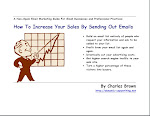Every freelance copywriter spends grueling hour upon hour trying to convince readers that a certain product, service or company is the “best.” After all, why should your customer buy your product if the competing “Brand X” product is superior?
Well there are two problems with the whole issue of which product, service or company is the best. First, how do you determine what “best” really is?
And second, how do you communicate “best” in a way that is convincing to a well-justified public’s skepticism that “best” isn’t just puffery or downright lies?
Years ago, just after I graduated from college, I went to work for a giant financial services company in their telephone call center. My job was to answer a wide variety of questions people had about the mutual funds this company offered.
A frequent question people asked was, which was the “best” mutual fund?
There really is no way to answer that question. All the funds were managed to do different things and meet the needs of different investors. The way I learned to respond to the “best” question has direct application to a freelance copywriter trying to communicate “best” in the copy he writes.
“Best” depends on the circumstances, the customer, what the customer wants, what problem the customer wants solved and an endless list of other situation-specific factors.
So I learned to ask callers questions about whether they were now retired or planning for retirement? If they were planning for retirement, how many years away was it and what were they setting aside to save for the day they would be given their gold watch?
I asked questions to determine what their objectives were, how much risk and market volatility they could comfortably stomach, and what other investments they had in their portfolio.
The goal of all these questions was to help them put together a balanced portfolio to meet their own individual needs and objectives.
So what does this have to do with helping freelance copywriters write compelling copy? The “best” widget varies depending on the customer’s needs and circumstances. If you know your target customer, you can carve out a niche to be the “best” for that type of person, or company. The more you learn to speak that target customer’s language and communicate understanding for the problems she faces, the more credibility you will convey that your widget is the “best” for her.
It’s all about not trying to be the “best” for the entire human race. I’ve spoken before about creating a new category and dominating that category to the point that you own that category. Why be a little fish in a big pond when you can be the big fish in your own pond? I recommend you read my article on how to create your own unique selling proposition (USP) called, 10 Steps to Writing a Powerful USP for more on this subject.
The answer to the “best” question is, “that depends.” That answer sounds evasive but it is not. It has to do with finding out more about who your customer is and how to surgically solve that customer’s problems. Once you do that, you can truthfully and credibly claim to be the very best.
COPYRIGHT © 2006, Charles Brown
Labels: copywriting, niche marketing, USP



0 comments:
Post a Comment